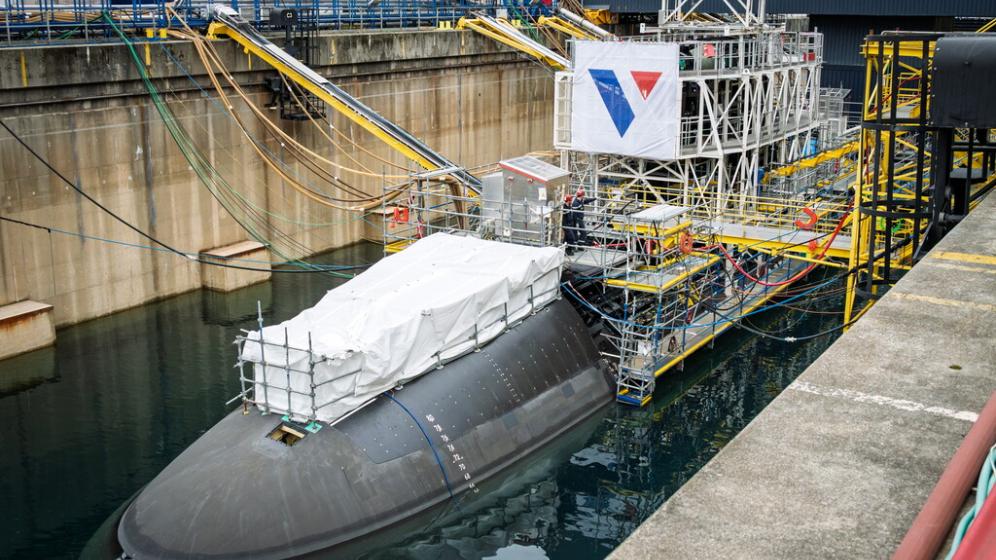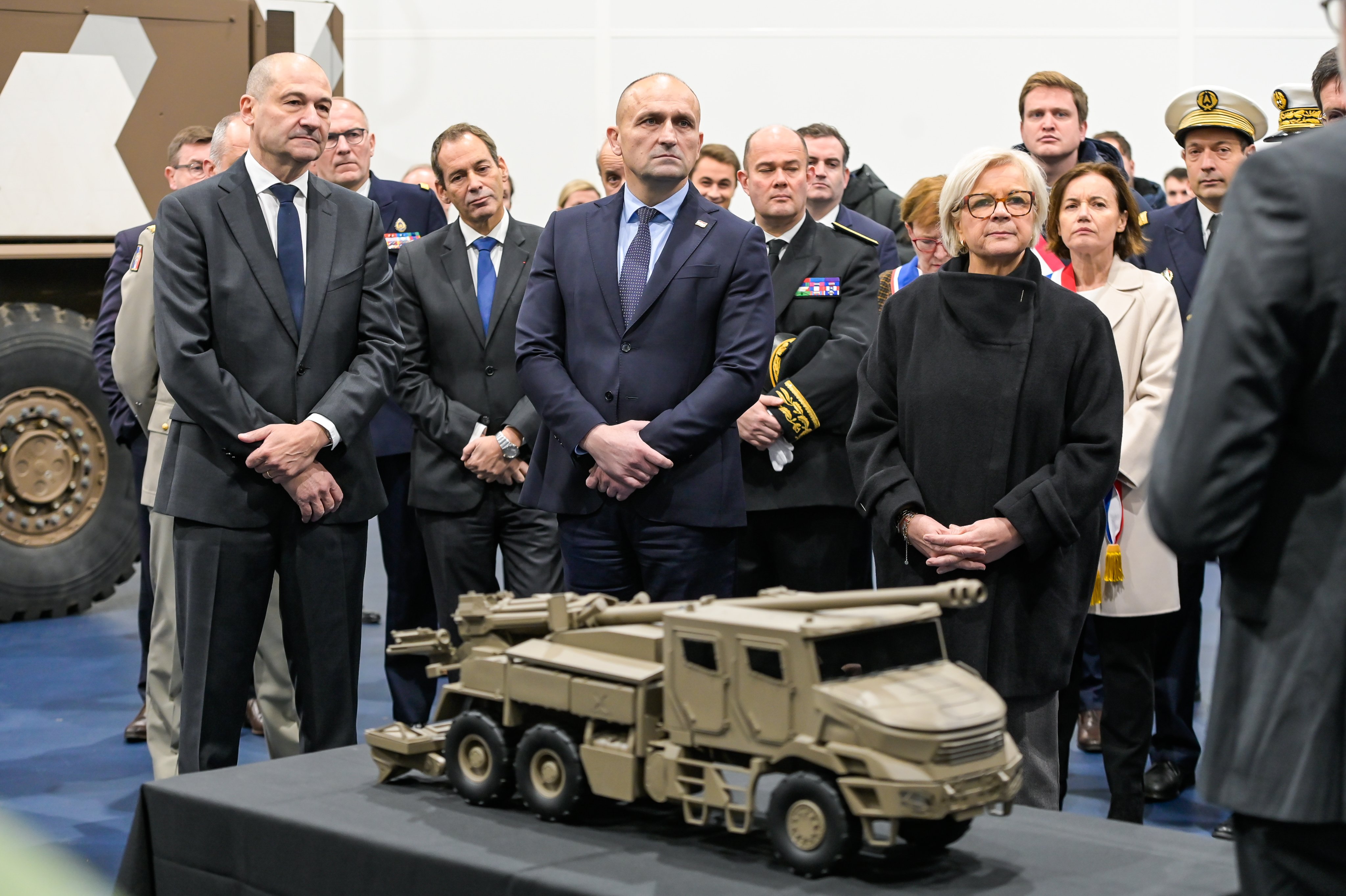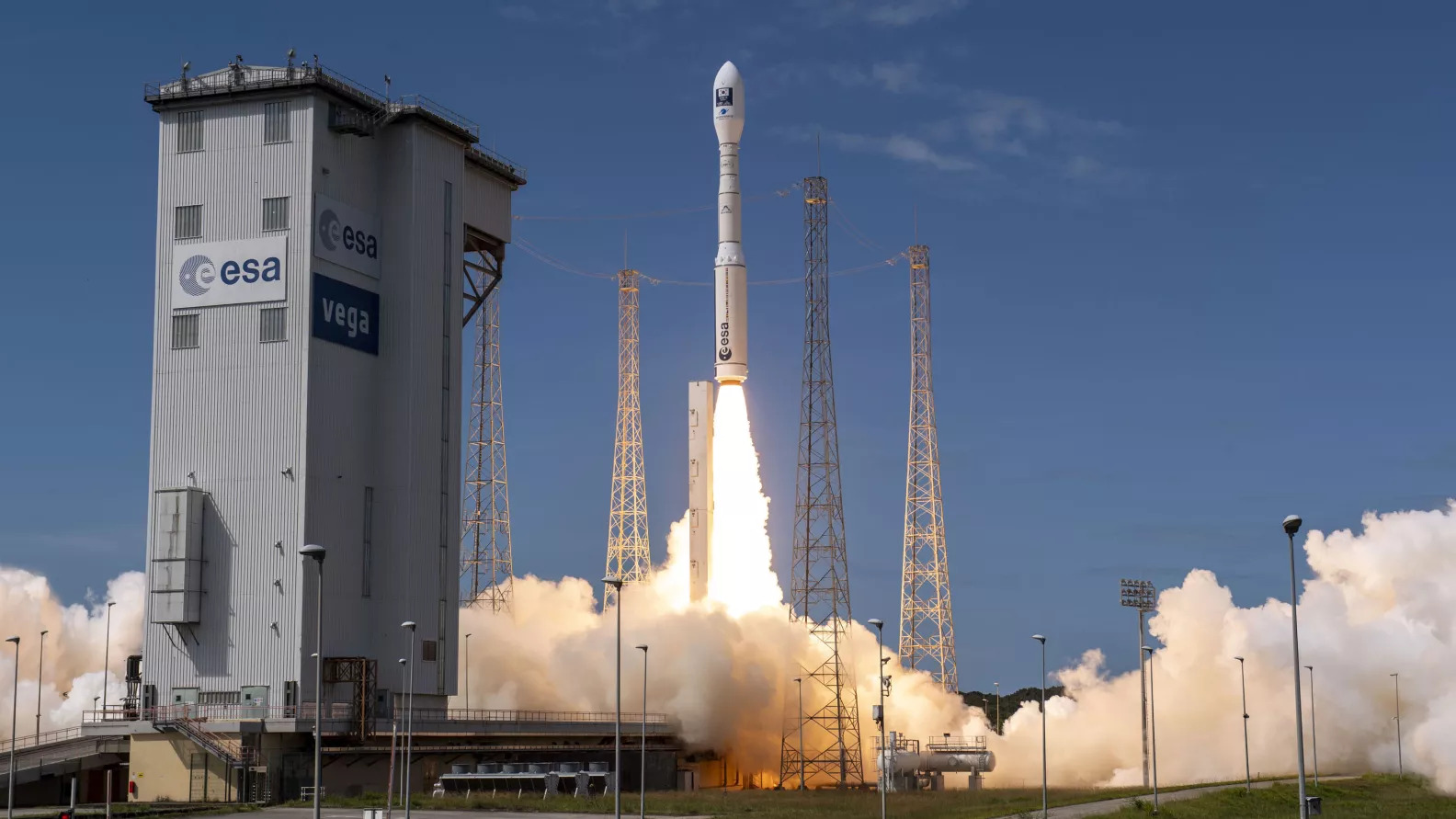The assets in space that are essential to our society and our independence are facing growing threats that are often developing in outer space, itself becoming an independent field of strategic confrontation. Now we need to increase our capabilities and adapt our doctrine.
Space: a Strategic Issue and a New Warfighting Domain
Space is a strategic issue, mostly unknown to the citizens. While the dependence of our societies, economies, citizens and military operations on space has never been greater and continues to grow, the risks, threats and vulnerabilities in space have never been so important and are constantly growing. Formerly the object of a relatively peaceful strategic competition, space becomes a field of confrontation and weaponization of space is an ongoing process. It must now be considered as a domain and as a component like the land, maritime, air or cyber domains and components. Evolutions of our doctrine, capabilities and organization are inevitable.
* * *
The French know little but space is essential to their daily lives and the prosperity of our economies. On a daily basis, French people use satellite services very often without knowing it. Ordering a VTC, withdrawing cash abroad, communicating with loved ones when traveling far, checking the weather of the day, getting to an appointment with the GPS of a car, watching a game of the cup of the world of football taking place on another continent, finding the nearest petrol station with a Smartphone or finding the nearest self-service bike depend on satellites and space services.
But space has also become unavoidable for the environment or the economy. Satellites make it possible to evaluate global warming, to measure climate change, to observe ecosystems, to know biodiversity. They make it possible to optimize the use of agricultural land, regulate and control the exploitation of fisheries resources, and measure and control deforestation or coastal erosion. Many space applications can help us to know the evolution of the environment and to design and implement preservation, good management or preservation measures. The space industry is developing à la carte services in fields as diverse as precision farming, with monitoring of drought levels and crop yields, optimization of meteorological accuracy, and road or air traffic management, monitoring of energy or transport infrastructure, filling of car parks or state of offshore platforms. In a more general way, space is essential to the good functioning of our globalized economies because it allows the exchange of information in near real time, secure banking transactions and their synchronization.
The applications are endless and the perspectives huge. On April 9, 2019, at the 35th Space Symposium in Colorado Springs (USA), a true international space show where the most eminent personalities speak on the subject of space, the acting US secretary of Defense Patrick Shanahan began his speech by comparing the role that space will play tomorrow for the prosperity of the United States to the one played by the oceans in past centuries. US secretary of Commerce Tim Ross added shortly after, according to estimates by the Commerce Department, the space economy would represent $1 trillion to $3 trillion according to the assumptions by 2040, against $400 billion in 2020 with known market sectors such as space communications, Earth observation, navigation and weather. But also new market segments such as space tourism, robotics, in-orbit services, space debris removal and mining of planets and asteroids.
* * *
Indispensable to our economy, to the proper functioning of our societies and to the everyday life of the French, space is equally important to the exercise of our strategic autonomy by the capacity it offers to our authorities to decide and transmit their decisions sovereignly. The French decision not to follow the United States in their intervention in Iraq in 2003 rested in particular on the capacity of France, thanks to its observation satellites, to independently assess the evidence concerning the detention and the use of weapons of mass destruction by Saddam Hussein.
It is also indispensable for the planning and conduct of our military operations. Our space defense capabilities allow our staffs and forces, in the homeland and on all our theaters, on land, at sea and in the air to see, listen, understand, communicate, navigate, locate and deliver armaments with a formidable accuracy in all weather.
From the beginning, space was considered a pillar of national strategic autonomy. The observation was initially used for strategic purposes for political and military decision-making, for nuclear targeting or for monitoring compliance with nuclear disarmament treaties. In the 1980s, the doctrine “Observe Listen Communicate” was defined and a space office created within the joint staff. During the first Gulf War, France understood the potential of space for the conduct of operations and not only for its contribution to the strategic decision. Spatial imagery, a necessary tool for politico-military decisions of strategic level, saw its use gradually go down to the lowest operational levels. In operational level staffs, then in components and even in units deployed in the field. The very recent case of Operation Hamilton,(1) which refers to the strikes carried out by France with the United States and the United Kingdom on April 1, 2018 against Syrian sites, is a perfect example. Space capabilities have been critical for policy-making, targeting, planning and execution.
Space support for operations covers intelligence, targeting, communications, positioning and navigation, plus meteorology and geography. With a little over €3.6bn over the duration of the Military Procurement Law voted in July 2018, all the military space assets dedicated to support operations and authorities will be renewed, with increased performances. The CSO observation satellites will replace Helios 2, the Syracuse IV communications satellites will replace Syracuse III and the CERES constellation will be commissioned.
Dedicated to military observation, CSO is a constellation of 3 satellites placed in polar orbits of different altitude. Focusing on coverage, theater acquisition and revisit, the reconnaissance mission is filled by two satellites at an altitude of 800 km. The Identification mission, provided by the third satellite at 480 km altitude, benefits from the highest level of resolution, image quality and analytical accuracy. Completely deployed by the end of 2021, the CSO system will maintain sovereign access to optical imaging, in clear daytime or at night, with unsurpassed sensor performance and acquisition capacity. France opens the CSO capacity to its European partners to play the complementarity of the sensors and federate a space Europe Defense. Thus, in the broader context of the MUSIS program,(2) bilateral agreements ensure Germany and soon Italy a right to use the CSO system in exchange for access to their radar satellites. In the same way, the provision of the Kiruna Polar Station gives Sweden access to CSO.
Syracuse IV will constitute between 2021 and 2035 the heart of the long-distance communication capacity necessary for our military operations and the command of the deployed forces, in autonomy. It is structured around a three-component system. The space segment with two geostationary satellites launched in 2020 and 2022 will operate in the X and Ka bands. The user ground segment (SSU) will rely on an existing fleet of ground and naval ground stations to be reused, adapted and supplemented, including aeronautical stations, to meet changing needs. An operator ground segment will manage the network of communication means constituted by the user ground segment and the other satellite communication systems of the French department of defense.
CERES will finally equip the armed forces with an operational space eaves dropping capability in complementarity with the non-space capabilities already implemented in this area. CERES will detect and locate a wide variety of radar or telecommunication transmitters on almost the entire globe. The analysis of the data collected will provide information on areas in which we are today almost blind and fuel the strategic, operational and tactical levels. The rarity of such a capacity and the expected performance of the CERES system will make it a real asset for the French forces and more generally for France by increasing its autonomy of appreciation.
To these capacities will be added the services provided by the European constellation Galileo for navigation, the images of the Pléiades satellites and their successor, an access to the images of the radar satellites SAR-Lupe (ALL) and COSMO-SkyMed (ITAL), those of the satellite dual ATHENA-FIDUS(3) (with Italy) and access to SICRAL 2 (ITA) services.
* * *
But the context changes radically. While the dependence of our societies, economies, citizens and military forces on space has never been greater and growing, the risks, threats and vulnerabilities in space have never been so important and are constantly growing. Risks are caused mainly by the vertiginous increase in the number of objects in space with an unparalleled densification of outer space. In 1957, the launch year of Sputnik 1 by the USSR, the Earth had only one object in orbit. Today, there are more than 1,700 active satellites, an estimated number of more than 6,000 in 2025, and between 15,000 and 20,000 debris larger than 10 cm, plus several hundred thousand pieces of debris larger than one centimeter. At the same time, several major space powers have developed capability since the end of the 2000s to neutralize enemy space capabilities, with some acceleration for about five years. Threats to our space capabilities are proven. Cyber threats, sabotage, jamming, intelligence, denial of service, partial physical incapacitation or total destruction: these threats are varied and some are already operational. Thus, the Russian satellite Luch Olymp, cited by the minister in September 2018, approaches communications satellites to capture the communications flows. Several anti-satellite missile fires have been observed since 2007 with a Chinese demonstration against one of their satellites in 2007, followed by an American demonstration in 2008 and more recently by India in March 2019. Other anti-satellite capabilities are more experimental. For example, satellites in geostationary orbit that are thought to be able to damage and desorb other satellites using articulated arms or directed energy weapons, or space vehicles capable of carrying military payloads and to approach non-cooperative spatial objects. Some hostile actions may also be carried out by satellites having the appearance and missions of a civilian or scientific satellite. This makes aggression difficult to characterize and attribute and is a real concern for the future given the proliferation of non-state space actors.
As space is thus not only a major economic issue but also an environment whose mastery is essential to military operations, strategic competition in space becomes confrontation with new modes of action. It is certain that a confrontation between powers with space capabilities will extend to the space domain from the very first hours, each seeking to deny the adversary the use of its space capabilities and deprive it of the decisive advantage of freedom of action in and from this domain.
Space is no longer just a domain to support military operations, but is already and will be more and more a warfighting domain, just like the land, maritime, air and cyber domains.
In this context, it is essential to review our doctrine of the use of space. A true concept of military space operations is emerging. It can be defined as all activities carried out by or for the benefit of the Ministry of the Armed Forces in, to and from space to ensure the availability, monitoring, safety and security of national space capabilities and services, or national interest. Military space operations consist not only in operating capabilities to provide services in support of government authorities or military operations, or in contributing to the security of the territory and populations, but also in necessary actions to protect our means and discourage aggression against these capabilities. Such a doctrine could be articulated around the traditional functions like ISR, support to military operations, Space Situational Awareness (SSA), and potentially new functions such as the action in the space.
SSA is a priority. Monitoring space and acquiring the knowledge of the space situation is a prerequisite for any exploitation of the space domain and in particular for the conduct of military operations, as well as for the implementation of a military space policy. The SSA responds to a military requirement that is the need to assess the threats that space-based space systems may pose to space on our national space capabilities, and, on the ground, our territory or forces deployed. This need is fundamental to attribute a hostile or unlawful act to its author and allow the political authority to take the appropriate measures. The SSA also addresses a need to prevent collision risks in space between active satellites and other objects, including space debris. We must therefore be able to detect, characterize and track all space objects that may pose a risk or threat. The surveillance radar GRAVES implemented by the Air Force, the SATAM radars also implemented by the Air Force, the GeoTracker and TAROT telescopes today provide an initial surveillance capability unparalleled in Europe. It remains insufficient, however. France must build, with European partners, a real capacity in this field. A reflection on a global architecture combining complementary sensors such as radars (to succeed the GRAVES radar), telescopes, imaging radars, monitoring systems in orbit to monitor and monitor all objects of military interest in outer space.
But if we want to be able to protect our space capabilities, we will have to go beyond that. At the request of the President of the French Republic and the Minister of the Armed Forces, all possibilities have been studied in this field, from reactive launchers to reusable space vehicles carrying a variety of payloads.
* * *
In parallel, many questions appear. How to define and characterize behaviors and actions in Space, as a nation or as a member of a coalition? How to characterize a hostile intention, a hostile or dangerous act, especially below the threshold of armed aggression and how to respond to it? What rules of engagement, including peacetime? How to interact with the adversary, as a nation or as a member of a coalition? What reversible actions or non-reversible actions to be conducted? How to define and conduct a warning action in space? What capacities must be defended? With which level of priority? The national interest is not limited to military capabilities but also includes commercial or civilian capabilities, sometimes multinational or even foreign, within and outside the coalition, how to defend these capabilities? How to formalize cooperation with commercial operators? Their conditions of use should be clearly defined and robustly agreed to cover the entire spectrum. In particular, in what situations and under what conditions would a transfer of authority be necessary?
An immense field of thinking opens consequently to the Ministry of Armed Forces. It is now necessary to design coherent decision and command chains in national and with our allies and partners to ensure the concentration of efforts in the diplomatic, informational, military and economic fields. It is necessary to establish and promote rules of behavior and measures of transparency and trust in order to promote a responsible use of Space. We must develop a common dialectic, not only with the allies, but also with other nations, including potentially adverse ones, to preserve, amend or elaborate norms and also minimize, in peacetime, the risk of misunderstanding between parts. Spectrum-wide capabilities and a range of options are needed to be able to act in a continuous, flexible and proportionate manner, especially in the face of an adversary who intends to remain below the threshold of armed conflict or in the event of a characterized hostile act. Finally, there is a need for better collaboration between the cyber and space domains, and more generally, between the different components in operations that will be more than ever multi-domain.
* * *
To conclude, the challenges are considerable and the issues all the more complex as the space is experiencing a revolution that, while carrying the risks mentioned above, offers many opportunities. The digital revolution and the new economy applied to space are a chance. They offer new, more flexible, more responsive, more innovative services that can be used by the Armed Forces. Because acquisition and capacity development modes are changing for these capabilities and services, moving from a long-time logic with perfect control of risks to a logic of shorter time, experimentation, demonstrators, with acceptance of a measured risk, even that of a defined need by walking, iteratively. These two approaches are complementary. For complex space systems, the risk management approach is inevitable given the financial stakes. For new capabilities, the call for innovation, the emergence of a truly innovative space ecosystem in France and an iterative approach based on demonstrators implementing technologies in the commercial sector will be assets for France, our Armed Forces and our military operations. ♦
(1) See the article by Lieutenant Colonel Moyal in this volume, p 47-52.
(2) Multinational Space-based Imaging System for Surveillance, Reconnaissance and Observation.
(3) Access on THeatres for EuropeaN Allied forces nations-French Italian Dual Use Satellite.







